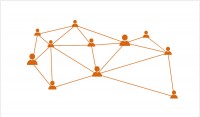The Workings of Standard Economic Theory
In this paper, we will be taking a brief overview of the internal workings of standard economic theory. We talk about how it is a framework that applies linear systems theory to economic analysis. In so doing, it defines the economy as a closed system, the core structure of which being a general equilibrium between supply and demand leading to a framework that is often defined as the “rationality-individualism-equilibrium nexus.” We discuss this idea of rationality of agent behavior, that is, individuals making consistent choices in isolation. We talk about zero sum interactions between agents and how methodological individualism de-promotes any conception of institutions beyond that of pure market mechanisms, which is seen to be the optimal method for macro-scale resource allocation. Finally, we talk about how linear systems theory gives us a certain view of economic dynamics that sees change coming from exogenous factors and economic development as an increase in gross throughput to the system.
This paper will not be a critique. If you are reading this paper, you would have probably heard many of the critiques leveled against standard economic theory. The limitations of our standard economic framework are not superficial. They are systemic in nature, meaning they are part of the very foundations and fabric of the framework. What we will be trying to do here is get an idea of why our traditional economic framework is the way it is. From this, we should gain a greater appreciation for it and gain a true understanding of where its limitations lie. Key to understanding this is in understanding what we call linear systems theory. So we will spend quite a bit of time talking about this first.
Publish Date: 25-4-2017
Length: 18 pages
Type: Research Economics







